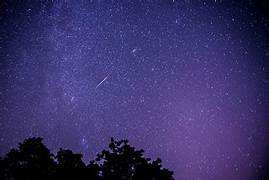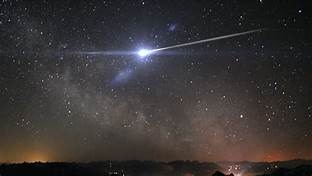
Aug. 11. Go outside, look up. You could see a shower of meteors and bright fireballs light up the night sky this week.
The Perseids meteor shower is expected to peak on the mornings of Aug. 11-13, according to EarthSky. NASA said it’s the “best meteor shower of the year.”
The shower is known for its fireballs, according to NASA. The sky could be lit up by explosions of light that last longer and are brighter than a typical meteor streak.
This year, you can expect to see up to 60 meteors per hour at the shower’s peak, according to Earthsky.org.
“With clear skies, you could see what some consider the most spectacular cosmic light show,” Space.com reported.
The meteors come from comet particles and asteroids. When Earth passes through the debris trail, people can see the small space rocks appearing as shooting stars when they collide with the planet’s atmosphere, NASA said.
Less moonlight, more show
This year is a great year to view the meteor shower because there won’t be a lot of moonlight ruining the show, according to EarthSky.
The Perseids come back each year in August and are expected to reach their peak between today and Friday, Aug. 11-13.
The best viewing hours will be between midnight and dawn on Thursday, Aug. 12, according to NASA.
Every year, Earth passes through the path of Comet Swift-Tuttle from July 17 to Aug. 24, with the shower’s peak — when Earth passes through the densest, dustiest area — occurring Aug. 11-13. That means you’ll see the most meteors in the shortest amount of time near that time, according to Earthsky.org.
Perseids are typically fast and bright, and they occasionally leave persistent trains. A Perseid fireball can be quite spectacular and bright.
Tips for viewing
+ The best time to look for meteors is in the pre-dawn hours. While the meteors will peak between August 11-13, they typically start streaking through the sky on July 17 and will typically be visible through 10 days or so after the peak, according to Earthsky.org.

+ Some of the biggest obstacles to good meteor viewing are cloudy weather and light pollution.
+ Try to get away from lights.
+ A hammock, blanket or a chair that leans back will save you from craning your neck.
+ Give your eyes plenty of time to adjust to the darkness — at least 30 minutes, the experts say.





